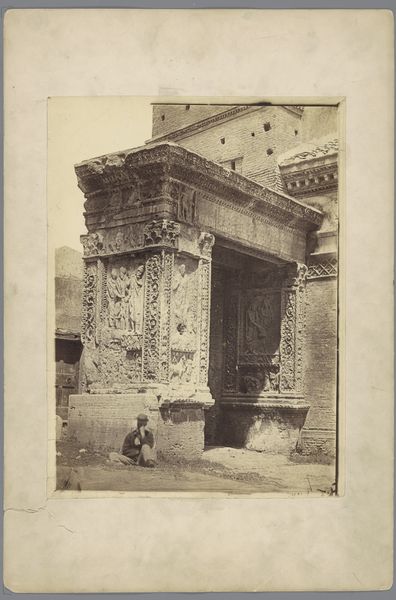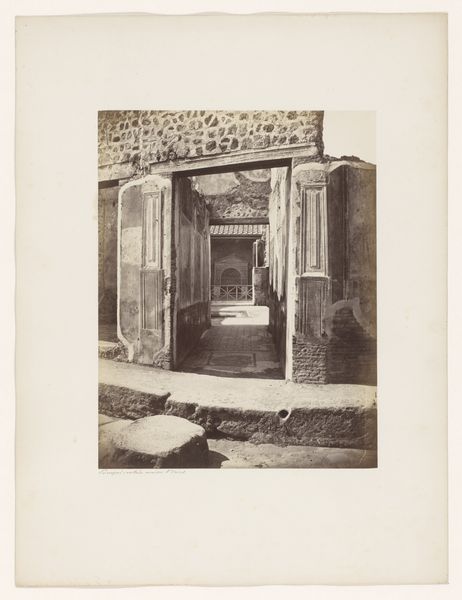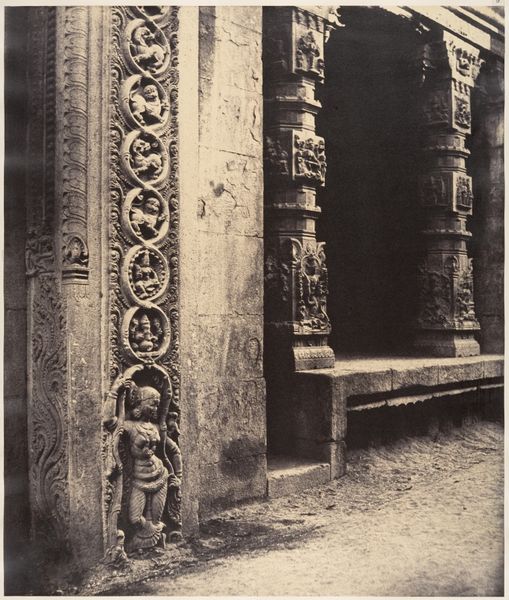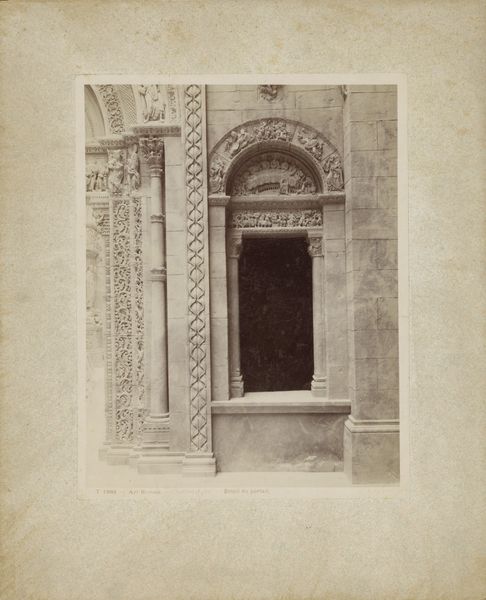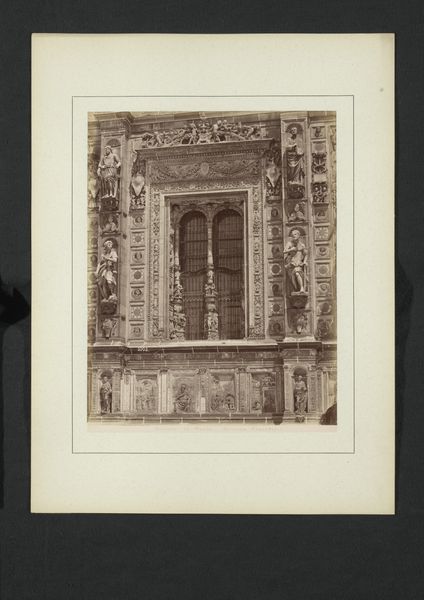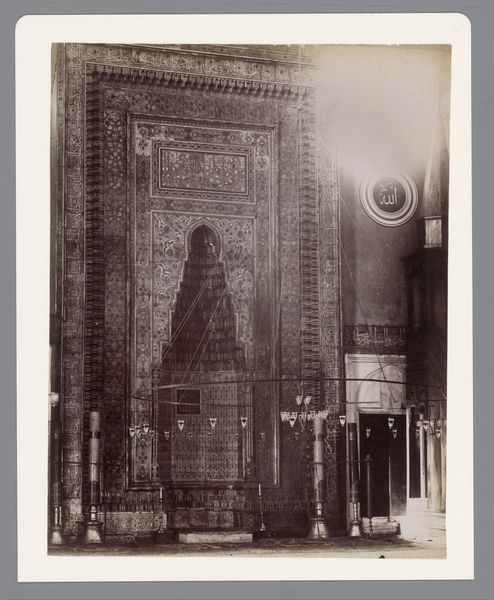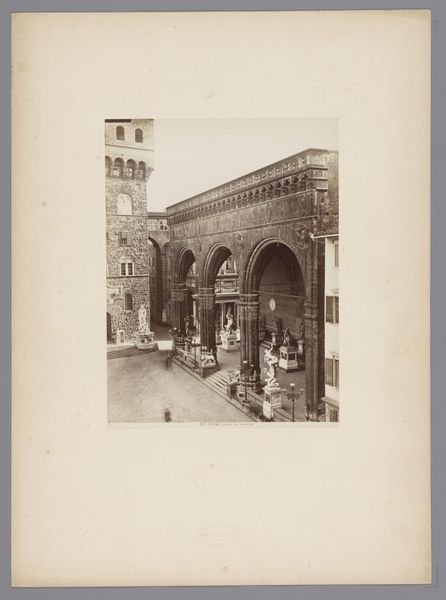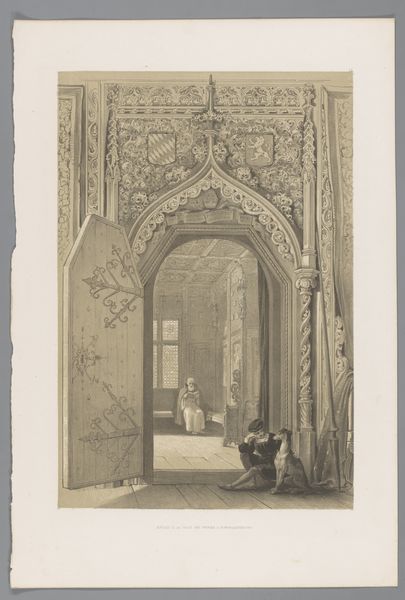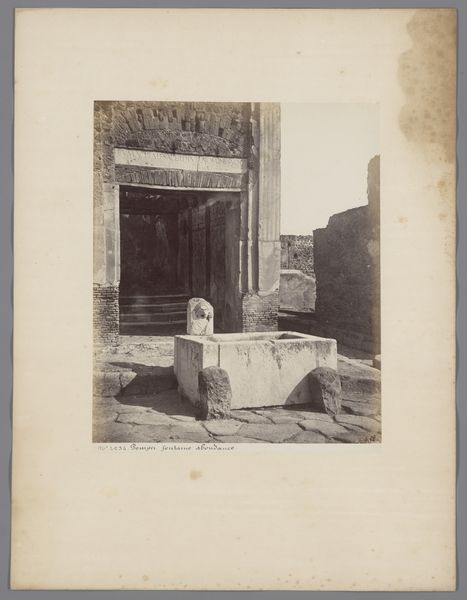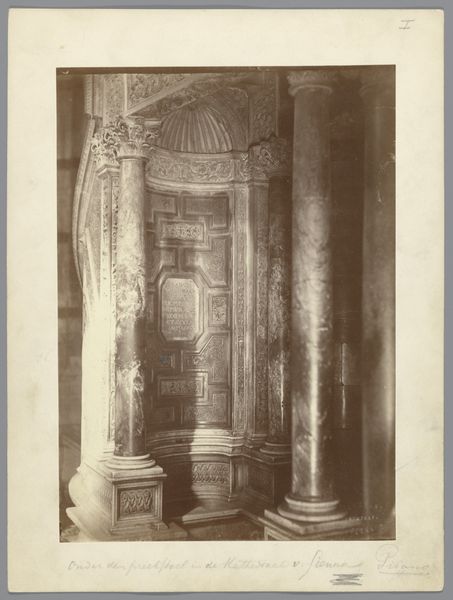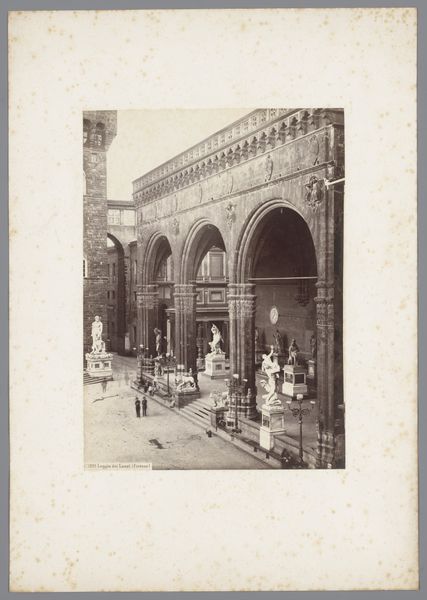
tempera, print, photography, architecture
#
tempera
# print
#
landscape
#
photography
#
ancient-mediterranean
#
orientalism
#
19th century
#
architecture
Dimensions: height 280 mm, width 214 mm, height 310 mm, width 232 mm
Copyright: Rijks Museum: Open Domain
Editor: This photograph, "Gateway of the Raya Gopuram at Madurai, Tamil Nadu, India," was taken by Nicholas & Co. sometime between 1870 and 1890. I'm immediately struck by the contrast between the detailed carving and the everyday life unfolding at the temple's entrance. What aspects of this image stand out to you? Curator: Well, first, it’s crucial to understand that photography like this served a vital role in shaping Western perceptions of India during the late 19th century. How do you think the presentation of the architecture, especially with the inclusion of local people, contributes to the "Orientalist" narrative? Editor: I guess it's showing this "exotic" place and people to a Western audience, almost like a postcard. Is the way the photographer framed the image itself a kind of commentary? Curator: Precisely. The framing isn't neutral. Consider how the photographer chose to emphasize the architectural grandeur alongside glimpses of daily life. This could be seen as reinforcing colonial power dynamics by presenting Indian culture as something to be observed and documented, exoticized. Does the photographer invite you into the culture, or does it keep you at arms length? Editor: It does feel more like an observation. I hadn't considered how the very act of taking this photograph could be part of a larger political narrative. Curator: These photographs were often commissioned or collected by colonial administrators and wealthy Europeans, thus the choice to picture the Gopuram a certain way emphasizes a colonial, political, institutional dynamic. It is less about objective truth, and more about a social order that sought to represent the East within a Western framework. Editor: So, it's not just a picture of a temple gateway. It's also a reflection of how India was being understood and presented to the West at that time. I’ll definitely think differently about such images from now on. Curator: Exactly. By understanding the historical context and the motivations behind the photograph, we gain a much deeper appreciation for the politics embedded in visual culture.
Comments
No comments
Be the first to comment and join the conversation on the ultimate creative platform.
